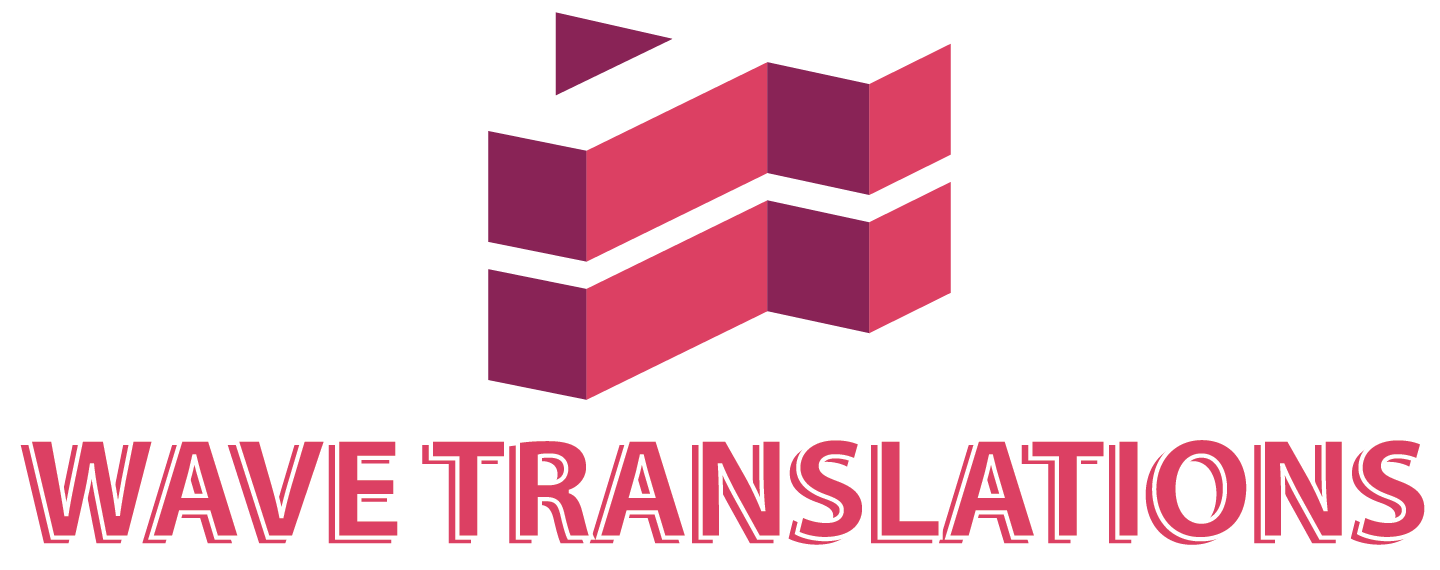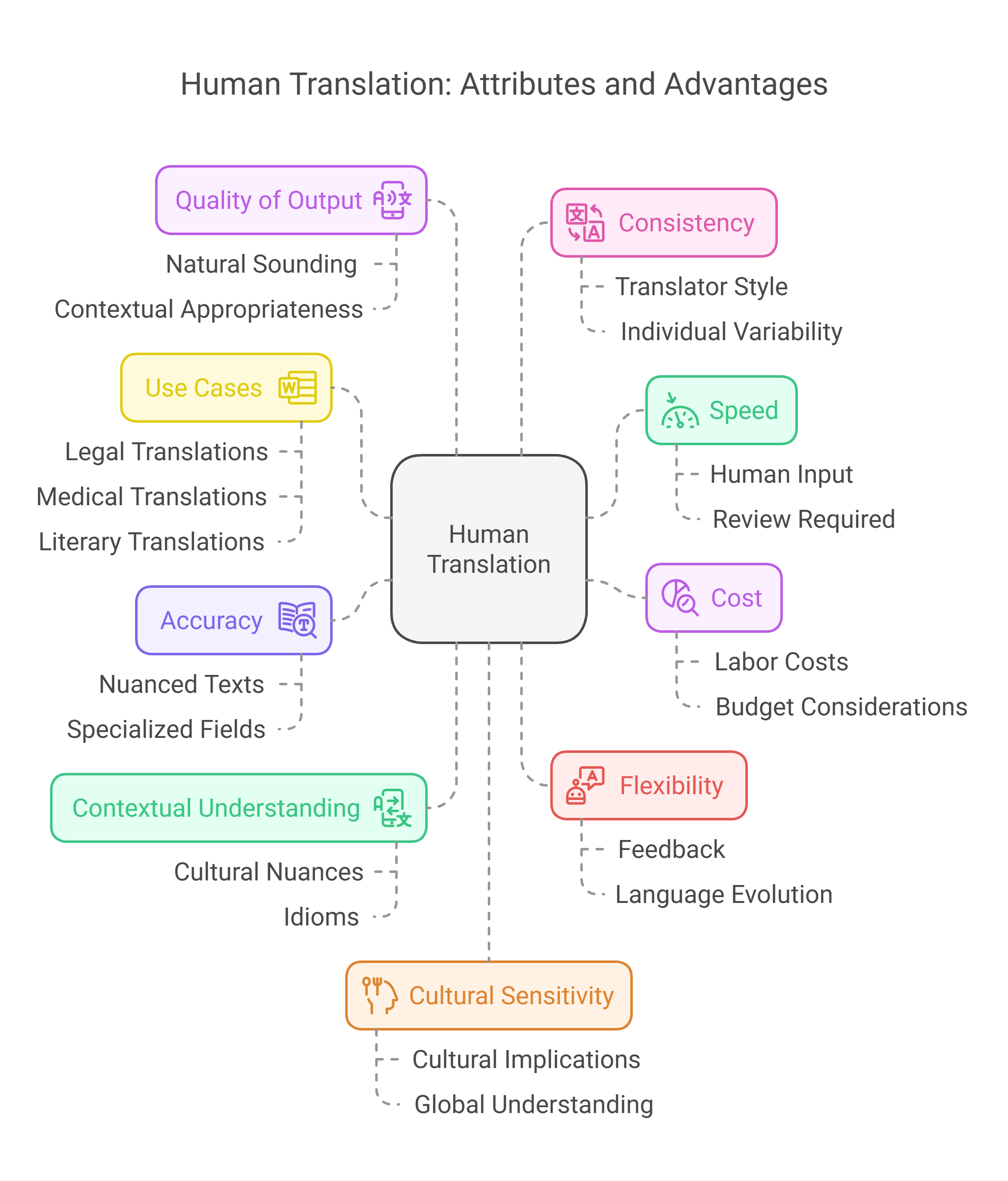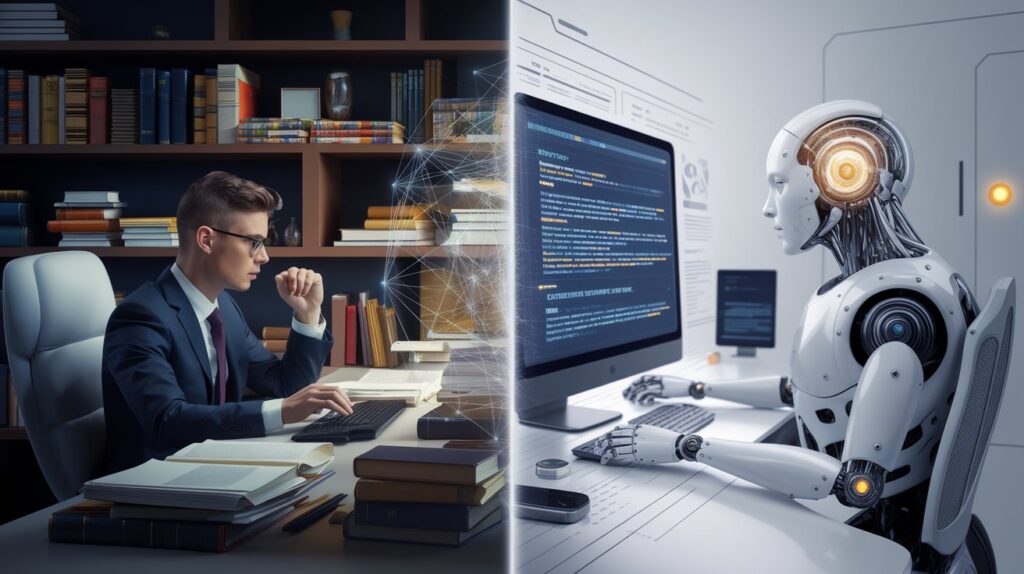In today’s world, talking to people all over is key to success. Companies face a choice: Human translation or machine translation. Human translation is precise and captures the fine details. Machine translation is fast but might miss some things.
As more companies need translation, they must weigh human and machine options. Machine translation has improved a lot. Yet, it can’t match the cultural insight that humans bring. Human translation is detailed but can be slow and costly. For big projects, machine translation might be better.
Understanding Human Translation and Machine Translation in Today’s Business Era
The world is getting smaller, and talking to people everywhere is key. New tech makes it easier for businesses to talk to everyone. Now, talking to people all over is a must, not just nice to have.
As companies grow, they need good translation to talk to everyone. New tech makes talking fast and easy. Now, businesses want to talk to everyone quickly and well.
The Evolution of Translation Technology
Translation tech has changed a lot. It used to be just people, then machines, and now a mix. This change lets companies pick the best way to talk to people.
Current Market Demands for Human Translation and Machine Translation Services
Now, everyone wants to talk to each other. Companies need fast and good translation. They want solutions that are quick, accurate, and don’t cost too much.
- Fast turnaround times
- High-quality translations
- Cultural nuance and understanding
- Cost-effective solutions
The Growing Impact of Global Communication
Talking to everyone is changing businesses a lot. It lets them reach more people and work with others all over. Good translation is key to being competitive globally.
The Fundamentals of Human Translation
Human translation is key in translation services. It needs skilled linguists to translate content well. They consider cultural nuances, context, and language expertise. This makes sure translations are accurate and high-quality.
The importance of language expertise in human translation is huge. It lets translators catch subtle language nuances. They can also share complex ideas well.
Some key benefits of human translation include:
- Accurate and high-quality translations that capture the nuances of language and culture
- Effective conveyance of complex ideas and context
- Ability to understand and incorporate cultural references and idioms
Human translation is often done by professional translation services. These services have skilled translators. They know the source and target languages well. They also know the cultural context of the content.
By using human translation, businesses can make sure their content is translated right. This is very important for success in today’s global market.
| Translation Type | Description | Benefits |
|---|---|---|
| Human Translation | Translation performed by skilled linguists | Accurate, high-quality, and nuanced translations |
| Machine Translation | Translation performed by automated software | Fast, efficient, and cost-effective translations |
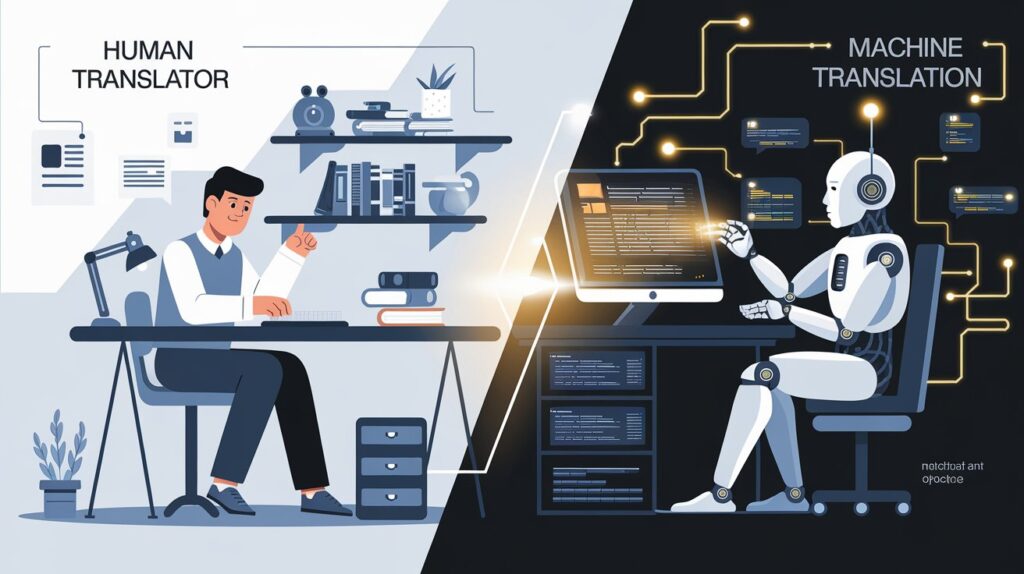
How Machine Translation Works
Machine translation uses smart algorithms and artificial intelligence. It’s fast and cheap for businesses. Over time, it has grown with neural networks, statistical models, and rule-based systems. Now, it’s key for companies wanting to reach more people worldwide.
It works by using complex algorithms to understand the source language. Then, it makes translations in the target language. Neural networks help machines learn from lots of data, making them better at translating. Statistical models find patterns in languages, helping with more accurate translations.
Types of Machine Translation
- Neural Machine Translation: uses neural networks to learn from data and generate translations
- Statistical Machine Translation: relies on statistical models to identify patterns and relationships between languages
- Rule-Based Machine Translation: uses predefined rules to translate content
Each type of machine translation has its own good points and bad points. Neural machine translation is great for complex languages but needs lots of data. Statistical machine translation is quicker but can miss context and idioms. Knowing the differences helps businesses pick the right one for them.
| Type of Machine Translation | Strengths | Limitations |
|---|---|---|
| Neural Machine Translation | Handles complex languages and nuances | Requires large amounts of training data |
| Statistical Machine Translation | Efficient and cost-effective | Struggles with context and idioms |
| Rule-Based Machine Translation | Fast and accurate for simple translations | Limited by predefined rules and lack of nuance |
Human vs Machine Translation: A Detailed Comparison
Businesses have two main choices for translation: human and machine. Each has its own good and bad points. The right choice depends on things like how accurate and fast it is, and how much it costs. We’ll look at both options to help businesses decide.
Accuracy is a big deal in translation. Human translators are very good at getting things right. They understand the small details and context. Machine translation has gotten better, but it’s not as good with tricky texts and cultural stuff.
| Criteria | Human Translation (HT) | Machine Translation (MT) |
| Speed | Slower, as it requires human input and review | Rapid can process large volumes of text almost instantly |
| Cost | Generally more expensive due to labor costs | Cost-effective, especially for high-volume content |
| Accuracy | High accuracy, especially for nuanced and specialized texts | Acceptable for straightforward content but may falter with complexity |
| Contextual Understanding | Superior in understanding cultural nuances and idioms | Often lacks depth, leading to literal translations |
| Flexibility | Highly adaptable to feedback and evolving language use | Limited adaptability requires programming updates |
| Quality of Output | Produces natural-sounding, contextually appropriate translations | Can produce awkward or incorrect phrases |
| Consistency | May vary based on individual translator style | Ensures consistency in terminology across multiple texts |
| Use Cases | Preferred for legal, medical, and literary translations | Suitable for quick translations of general content |
| Cultural Sensitivity | High understands cultural implications | Low – may overlook cultural contexts |
| Overall Preference | Preferred for quality and nuanced work | Preferred for speed and cost efficiency |
The Cost Factor: Budgeting for Human Translation and Machine Translation Services
Translation services cost a lot for businesses. The price changes based on the type of translation, language pair, and quality needed. Businesses must think about their budget carefully. They should compare the cost of human translation to machine translation.
The quality needed affects the cost. Human translation is pricier but more accurate. Machine translation is cheaper for lots of content but might need editing. To save money, businesses can:
- Start with machine translation and then edit with humans.
- Use a translation memory system to avoid repeating translations.
- Choose a translation agency with good prices and flexible budgets.
Smart budgeting for translation helps businesses save money. It also lets them talk better to people all over the world. This can help build strong relationships and grow the business.
Quality Considerations in Different Content Types
When we talk about translation, different types need different levels of quality. It’s important to make sure the content is right for the audience. For example, technical documents need to be very precise to avoid mistakes.
It’s also key to know the cultural background of the content. This is very important for marketing stuff. A small mistake can hurt sales or reputation a lot. Legal documents need to be very accurate and follow strict rules.
Technical Documentation
Stuff like user manuals need to be translated carefully. They have special terms and ideas. It’s best to use experts in that field for these translations.
Marketing Materials
Marketing stuff, like brochures and websites, must connect with the audience. It’s not just about translating words. It’s also about making the content fit the culture and language of the audience.
Legal Documents
Legal papers, like contracts, must be very precise. The translation must follow strict rules to be legal and valid.
The table below shows what’s important for each type of content:
| Content Type | Quality Considerations |
|---|---|
| Technical Documentation | Precision, attention to detail, expertise in the relevant field |
| Marketing Materials | Cultural nuances, linguistic adaptability, resonance with the target audience |
| Legal Documents | Accuracy, attention to detail, adherence to specific terminology and formatting guidelines |
In short, quality matters a lot for different types of content. Knowing what each type needs helps make sure the translation is top-notch. This way, businesses can make sure their content is the best it can be.
Industry-Specific Human translation and Machine translation Requirements
Different industries need special translation rules. This is because of laws, technical needs, and cultural differences. For example, healthcare needs translations that keep patient info safe and private. Finance needs translations that follow strict rules about money reports.
Translation needs vary a lot in different fields. Here are some main points:
- Healthcare: Translations must follow rules like HIPAA to keep patients safe and private
- Finance: Translations must follow strict rules about money reports and sharing info
- Technology: Translations need to be very accurate and follow tech standards
Businesses can use special translation services for each field. These services know the unique needs of each area. They make sure translations are right, follow rules, and talk to the audience well.
| Industry | Regulatory Requirements | Translation Considerations |
|---|---|---|
| Healthcare | HIPAA, patient confidentiality | Technical accuracy, cultural sensitivity |
| Finance | Financial reporting, disclosure | Technical accuracy, regulatory compliance |
| Technology | Industry standards, software development | Technical accuracy, user documentation |
Knowing the special needs of each field helps businesses. They can make sure their translations work well. This is key in today’s world where talking clearly is very important. Special translation helps businesses deal with rules and cultural differences, making sure their messages are clear and right.
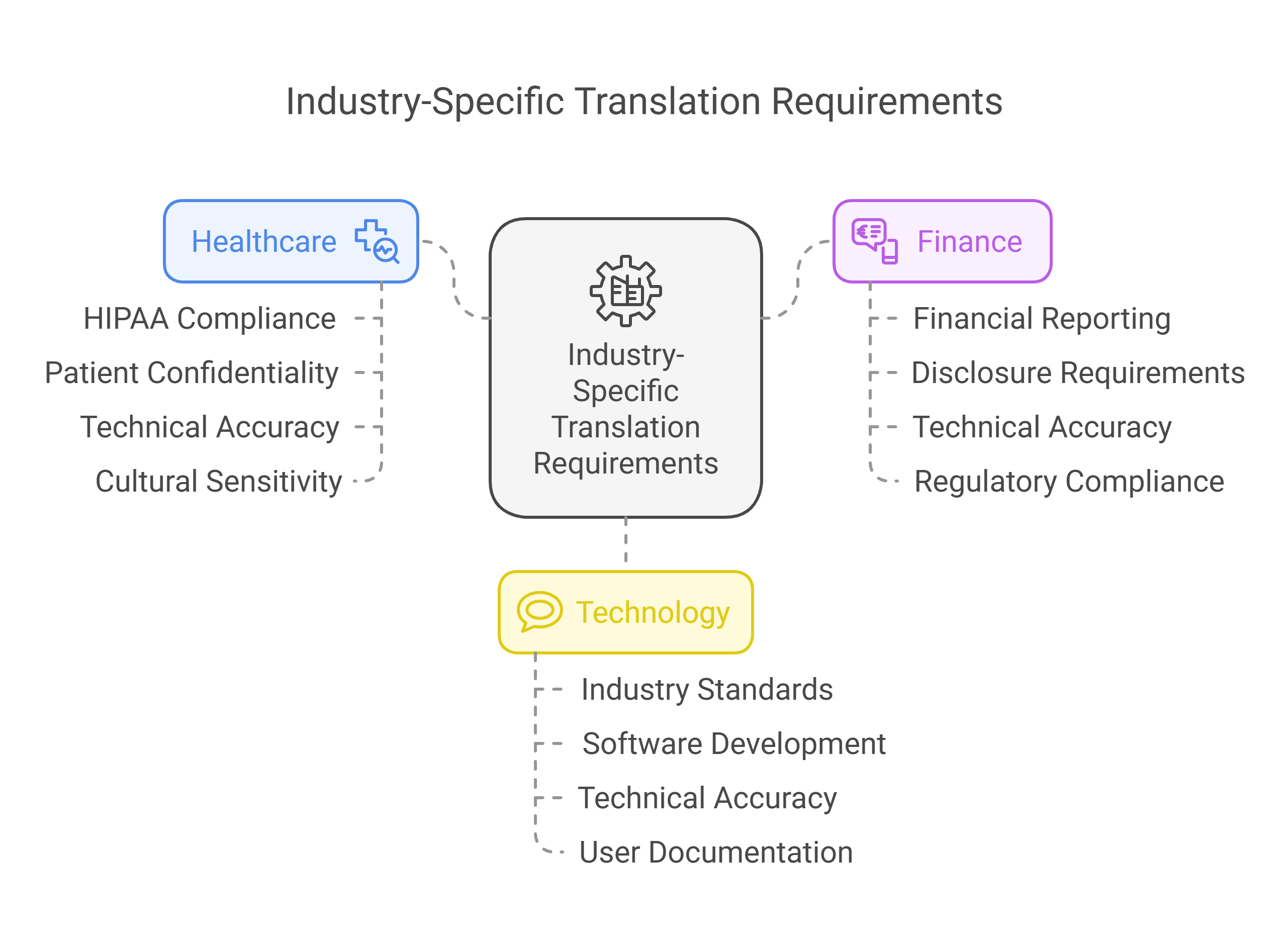
When to Choose Human Translation
Human translation is key when accuracy and cultural understanding matter a lot. It’s vital for important talks where mistakes can lead to big problems. Human translators get complex ideas and cultural hints right, with care and precision.
High-Stakes Communications
For big talks like business deals or legal cases, human translation is best. They catch the fine points of language and cultural hints that machines might not.
Cultural Nuance Requirements
Human translation shines when it comes to cultural subtleties. They grasp cultural references unique to certain places or groups. This makes sure the translation is both right and respectful.
Choosing human translation for critical talks and cultural details helps businesses get their message across clearly. It prevents misunderstandings and keeps communication smooth.
When Machine Translation Makes More Sense
Machine translation is great for businesses wanting to reach more people worldwide. It’s fast and saves money, perfect for lots of content. This includes making websites for different places, social media posts, and more.
Machine translation is super fast and accurate. It’s perfect for big websites or social media. It also saves money compared to human translators.
Some times when machine translation is best include:
- When you need to translate lots of things, like websites or social media.
- When you’re in a hurry and need things done fast.
- For things that don’t need to be perfect, like company documents or product info.
Using machine translation helps businesses save time and money. It lets them talk to people all over the world. This can help them grow and reach more customers.
Hybrid Approaches – Combining Human Translation
and Machine Translation
Businesses are now using a mix of human and machine translation. This mix helps make translations better and cheaper. It also makes work faster.
Post-editing is a big part of this mix. It means people check and fix the machine’s work. This makes sure the translations are right and good.
Quality is very important in this mix. It makes sure the translations are up to standard. This is done by checking and fixing the work, and by getting feedback.
Using both human and machine translation has many benefits. It makes translations better, work faster, and costs less. It also makes customers happier.
By using a mix of human and machine translation, businesses can get great translations. They can meet their needs and goals. This is true for post-editing and quality checks.
| Approach | Benefits | Challenges |
|---|---|---|
| Hybrid Approaches | Improved accuracy, increased efficiency, reduced costs | Requires skilled human translators and editors, can be time-consuming |
| Post-Editing Machine Translation | Improved accuracy, increased efficiency | Requires skilled human translators and editors, can be time-consuming |
| Quality Assurance Workflows | Ensures high-quality translations, improves customer satisfaction | Can be time-consuming, requires skilled human translators and editors |
ROI Analysis – Measuring Translation Success
It’s key for businesses to check if their translation services are worth it. They need to look at how well translation works for them. This means doing a deep dive into ROI analysis to see how it affects their profits.
They should also look at important signs of success. This helps them understand if their translation plan is working right.
Key Performance Indicators
Some important signs of success in translation include:
- How good the translation is
- How fast they can finish a project
- How happy customers are
These signs help businesses see if their translation plan is working. They also show where they can get better.
Long-Term Value Assessment
Looking at the long-term value is very important. It shows how much translation helps with making more money, growing in the market, and keeping customers happy. By using data, businesses can make their translation plan even better.
Making the Right Translation Choice for Your Business
Choosing between human and machine translation depends on your business needs. Both have good and bad points for accuracy, speed, efficiency, and cost. You need to think about what your business needs most.
For important talks, creative stuff, or needing to understand cultures deeply, human translation is best. But, machine translation is good for saving money and being fast. Often, mixing both is the best choice for businesses.
Know what your business needs and think about the good and bad of each translation type. This way, you can pick the best option for your global talks. Remember, what works for one business might not work for another. The best choice depends on your business’s special needs and goals.
Frequently Asked Questions
What is the difference between human translation and machine translation?
Human translation is done by skilled linguists. They consider cultural nuances and context. Machine translation uses algorithms for fast, cost-effective results.
When is human translation the better choice?
Choose human translation for important communications and creative content. It’s great for complex ideas and cultural references.
When does machine translation make more sense?
Machine translation is good for lots of content, like websites. It’s fast and cheap. Use it for big jobs and pair it with human translation for the best results.
What are the key considerations for businesses when choosing between human
translation and machine translation?
Think about accuracy, speed, efficiency, and cost. Find the best match for your business needs and goals.
How can businesses measure the success of their translation efforts?
Track KPIs like accuracy and customer satisfaction. Also, look at the long-term value of your translation investments. This helps make smart decisions.
What are some industry-specific translation requirements businesses should consider?
Each industry has its own needs, like regulatory demands. Make sure you follow industry standards and meet your sector’s specific needs.
How can businesses combine human and machine translation for optimal results?
Use hybrid approaches like post-editing machine translation. This way, you get quality translations while saving money and time. It combines the best of both worlds.
